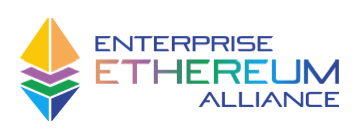
If you’re tuned into EEA news, you’ve likely heard a lot about EEA Community Projects recently. Born out of a partnership between the EEA and OASIS Open, EEA Community Projects is now the hub for Ethereum-related community-driven business standards development and project advancement. It’s a community that is dedicated to enabling the Ethereum business ecosystem to leverage a wider network of resources and further accelerate innovation.
One of the key projects under the EEA Community Project umbrella is the Baseline Protocol. This open source initiative utilizes advanced cryptography, messaging, and blockchain to deliver secure, low-cost, private business processes on the public Ethereum Mainnet. In case you missed it, there was some exciting news announced recently related to the Baseline Protocol, so we wanted to take a moment to provide some background on what the protocol is, why it’s important, and how you can utilize it to further your business.
What IS Baseline?
Let’s start at the beginning. The Baseline Protocol has been under development by companies like EY, Microsoft, ConsenSys, Unibright, Provide, Splunk and others in the open source community since 2019. In a nutshell, “it is an approach to using the public Mainnet as a common frame of reference between different systems, including traditional corporate systems of record, any kind of database or state machine, and even different blockchains or DLTs (Distributed Ledger Technologies).”[1] In practical terms, it helps ensure data consistency from one database to another to help streamline business and reduce instances of disputes related to data discrepancies. For example, the Baseline Protocol can be used to help ensure that a vendor’s data matches a merchant’s data in terms of what was purchased, price, when it was shipped, etc. Baseline is platform agnostic – platforms can be connected to any other platform using the protocol, as long as you have a connector. From SAP Dynamics to Salesforce to Netsuite and beyond, the baseline approach works with all of them. Even an excel spreadsheet can be baselined.
Understanding the Business Value
For businesses, using the Baseline Protocol with their counterparties (partners, suppliers, buyers) helps ensure important documents like invoices are verified, and that buyer and supplier information is consistent. This drastically reduces the risk of data discrepancies across systems that could result in time and money loss. If your records are baselined, the probability of disputes or repudiation drops dramatically, as there is a clear, identical data record available to all parties.
The high level of security offered by the Baseline Protocol is also a key selling point for businesses. When using the protocol, sensitive data is restricted to your internal storage place, all parties involved are required to use zero-knowledge proofs, and data is only exchanged in an encrypted, peer-to-peer fashion. In this way, the Baseline Protocol delivers a reliable, secure way to exchange information without revealing anything sensitive or risking costly data leaks.[2]
How do I start Baselining?
We’re excited to share that the Baseledger testnet went live on September 1st and is now available to the public. Baseledger, an open source project, is the first public network designed for storing and managing baseline proofs, which are an essential part of synchronizing systems of record across the internet in accordance with the Baseline Protocol. The high-performance, high-availability network provides verified systems integration services at very low cost and doesn’t require any financial or time investment to set up. The open source Baseledger codebase is now available on GitHub, where developers can quickly synchronize databases, ERP, CRM, accounting, compliance, and other information management systems across any set of companies.
We hope you found this post useful as you get up to speed on the Baseline Protocol and what it can offer your business. Visit the baseline website to learn more and stay up to date on everything EEA by following us on Twitter, LinkedIn and Facebook.
[1] https://docs.baseline-protocol.org/
[2] https://limechain.tech/blog/the-baseline-protocol-explained/
